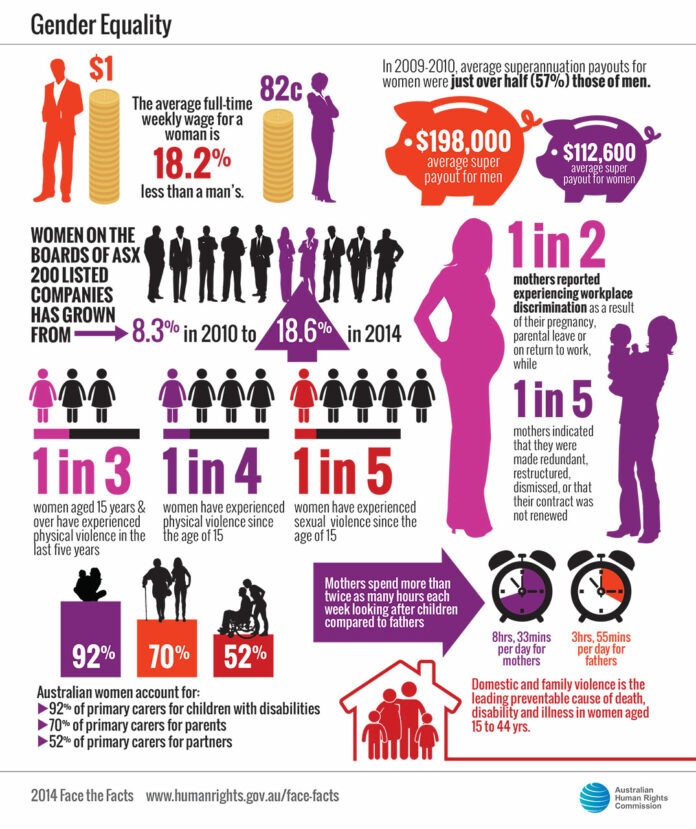Gender equality has emerged as a fundamental concern in contemporary societies, transcending the realms of mere social justice to become a pivotal coordinate of global development strategies. This exploration of gender equality statistics aims to elucidate notable disparities across various spheres, including economic participation, educational attainment, health outcomes, and political representation. In pursuing equity, we must confront not only the numerical disparities but also the qualitative nuances that present barriers to true gender parity.
Understanding these disparities requires a comprehensive analysis of gender equality statistics, which reveal both progress and persistent inequalities. By examining these data points, we can foster a mood-boosting experience rooted in informed optimism for the future of gender equity.
The Economic Landscape of Gender Inequality
Gender wage gaps remain a salient feature of workplace dynamics. On average, women globally earn approximately 63% of what men are compensated for the same work. This alarming statistic underscores systemic discrimination entrenched in organizational cultures, pay structures, and societal norms. Women are often relegated to lower-paying sectors or positions, effectively trapping them in cycles of economic dependency.
Data indicates that women occupy only about 39% of leadership positions in corporate environments, while representation in senior roles hovers even lower. Through the lens of intersectionality, women of color, disabled women, and LGBTQ+ individuals encounter compounded challenges, exacerbating these disparities. Addressing these inequalities necessitates concerted efforts from policymakers and corporate leaders alike to implement equitable hiring practices, promote diversity in leadership, and establish policies that support family caregiving without penalizing career progression.
Furthermore, the labor force participation rate for women has stalled in many regions due to various sociocultural factors, including traditional gender roles and inadequate policy support for maternity and paternity leave. Implementation of flexible work arrangements and robust childcare solutions can significantly enhance the economic participation of women, providing impetus for the next generation of female leaders.
Education as a Catalyst for Change
Education serves as a cornerstone for empowerment and transformation, yet the access and quality of educational opportunities reveal stark inequalities. Globally, girls are less likely to complete secondary and tertiary education compared to their male counterparts. For instance, it is determined that over 130 million girls worldwide remain out of school, primarily attributable to economic barriers, early marriage, and cultural predispositions valuing male education over female.
The education gap extends beyond mere enrollment figures. Once enrolled, girls often face discrimination and harassment, leading to high dropout rates. Investment in girl-centric educational programs and initiatives can precipitate a radical shift in these trends. Programs that focus on female mentorship, STEAM (Science, Technology, Engineering, Arts, and Mathematics) education, and scholarships tailored for young women can enhance retention and graduation rates, contributing to increased economic independence, community health, and societal resilience.
Moreover, the importance of education transcends individual benefits; it catalyzes broader societal evolution. Educated women are more likely to advocate for their rights and invest in their children’s education, thereby perpetuating a virtuous cycle of empowerment and progress. Thus, prioritizing education for girls and women globally is not only a moral imperative but also a strategic pathway towards sustainable development.
Health Outcomes: The Gender Gap in Well-being
Health disparities are another critical aspect of gender inequality. Women frequently grapple with unique health challenges stemming from reproductive health issues, access to healthcare, and societal stigmas surrounding female health concerns. While women tend to outlive men, they often experience poorer health outcomes in their later years, exacerbated by access disparities and chronic conditions.
Maternal health remains a paramount concern, as approximately 295,000 women die annually from preventable pregnancy-related causes. Access to quality prenatal and postnatal care is often hindered by socioeconomic factors and geographic limitations, particularly in low- and middle-income countries. To alleviate these disparities, comprehensive healthcare services must be made universally accessible, ensuring that reproductive and maternal health is prioritized within health policy frameworks.
Moreover, the psychological well-being of women faces multifaceted challenges, with higher rates of anxiety, depression, and other mental health disorders reported in women compared to men. Recognizing the role of societal pressures and gender norms in shaping mental health outcomes becomes imperative. It is essential to cultivate supportive environments that encourage mental health discussions, reduce stigma, and promote mental wellness through community support programs and initiatives.
Political Representation: Bridging the Gap
Political empowerment is intrinsically linked to gender equality, yet women’s representation in political spaces remains disproportionately low. While there has been commendable progress in some regions, globally, women account for approximately 25% of parliamentary seats. This underrepresentation ultimately impedes the formulation of equitable policies that reflect the needs and experiences of all constituents.
Strategies to bolster women’s political representation range from policy interventions such as gender quotas to grassroots empowerment programs that promote political literacy among women. Encouraging women to engage in politics not only catalyzes representation but also enriches the political dialogue with diverse perspectives, ultimately leading to more robust policy outcomes.
In addition, increased visibility of women in political roles can inspire the next generation, dismantling harmful stereotypes and fostering a culture of inclusivity. The ripple effects of women’s political engagement are profound; societies that actively engage women in decision-making processes experience enhanced governance, economic development, and social cohesion.
The Road Ahead: Toward an Equitable Future
In conclusion, the landscape of gender equality statistics reveals a complex tapestry of progress interwoven with persistent disparities. While the challenges are formidable, the insights gleaned from these statistics provide valuable guidance for policymakers, educators, and advocates alike. By prioritizing equitable economic opportunities, educational access, health care, and political representation, we can collaboratively forge a future characterized by genuine gender equality.
As we navigate this crucial journey, it is essential to embody hope and resilience, while steadfastly championing the cause of gender equality. Each stride taken towards equity not only uplifts individual lives but cultivates a more harmonious, prosperous world. Together, we can transform statistics into stories of empowerment, paving the way for generations of empowered women and equitable societies.





























